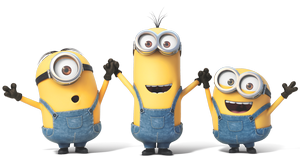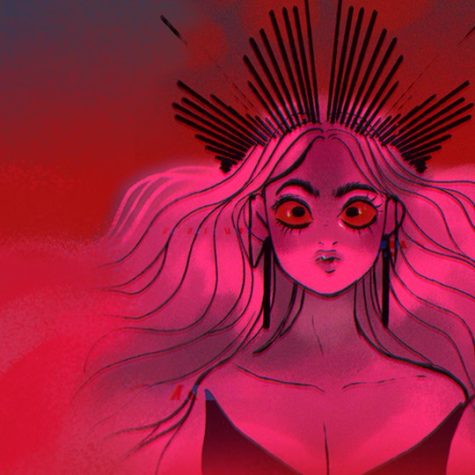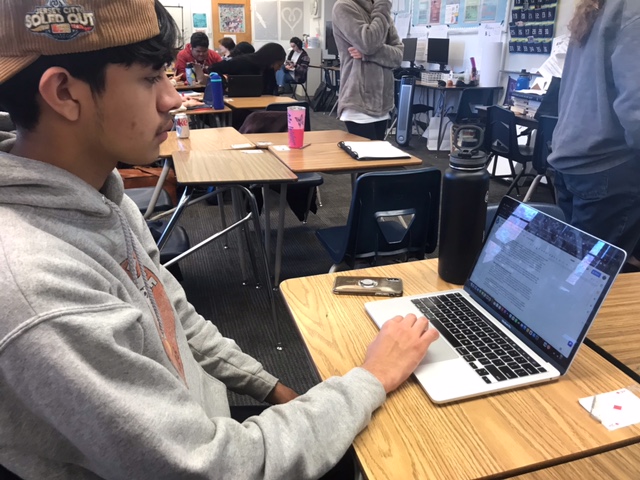Your donation will support the student journalists of Las Vegas Academy of the Arts. Your contribution will allow us retain our independence as journalists and to purchase equipment, attend journalism conferences, and cover our annual website hosting costs.
Tips to Creating and Continuing a Short Story
February 16, 2023
Character Creation
When it comes to character creation, it is important to find characters that have a purpose in the story. They should reflect your interest and views. It’s acceptable to have both main characters and side characters. Although they are side characters, make them memorable like the main characters. Give them a reason to be included in the story. Thinking of family, friends, or memorable people in your life could be a good way to come up with characters and their personality. Come up with their motivations. Why are they in the story? What will their journey be?
Make sure your protagonist has flaws. They aren’t always perfect. A character arc would be recommended since complex characters change over time. You don’t want them to be boring. With an antagonist, give them motivation. What are their goals and why? They should create a dilemma for the other characters. I would recommend your antagonist to be more powerful than the protagonist. Readers want the good guys to win, but make it entertaining. Make them develop the skills, items, and find allies in order to defeat the antagonist. Not all stories need an antagonist. Sometimes there could only be a conflict, so finding a solution to your situation can also create an interesting story.
Memorable characters should have important roles. What makes them memorable? Why will they be memorable? Questions like these would help you create a character that will make the readers remember. Giving them a specific quality can help readers recall who they are, even if they are side characters.
–How to Continue Character Development
Most of the time, characters are created and introduced throughout the story. They’re usually finalized during the brainstorming process, but thinking of including more characters as the story progresses is totally okay. The same ideas apply to them, but don’t make it random. What could their roles be in the story and why? You don’t want too many characters to the point where the reader won’t be able to keep all characters in their heads. Try to limit your choices so the story isn’t packed with characters.
If you decide to add more characters after the brainstorming process, think of ways it can affect the story. Will it change the outcome of the story? Can it affect the other characters? If you have a set story and don’t want to change it, then I would recommend keeping the characters you have unless you have a way to keep the story the same, or slightly change it so it doesn’t change the course of the story.
-Tips for Visual Character Design
Visual character design starts with defining the basic facts about who your character is. Questions like what is their personality, their purpose in the story, what colors do they like, what weather do they like to be in, or even the kinds of people they get along with can be helpful. While these don’t seem like things that you’d need to design a character’s appearance at first glance, each serves a purpose in a character’s color palette, hairstyle, clothing, culture, and relationships with other characters.
Let’s look at some examples in media.

The Minions are a well-known example of a character that is constantly full of energy and excitement. Some features that make this possible include all the round shapes in their design. Their bodies are rounded out rectangles, their goggles are circles, and even their hands are rounded at the ends.
While these shapes pose an important role in making such an approachable character, the colors also change how you see these characters. The bright yellow represents a sense of happiness and excitement. However, yellow can often represent deceit or a guise to hide true intentions or meaning. For the Minions, this represents how despite their appearance, they mean to find some evil cause to serve under.
Let’s look at one more example, a webcomic this time. You may have heard of Rachel Smythe’s ‘Lore Olympus’, a webcomic about the story of Hades and Persephone. While any reader can go through the story and appreciate the art, you might not always stop to acknowledge just how incredibly thought-out the character designs are. Let’s look at the main character Persephone’s design.


At the beginning of the story, Persephone is seen as an innocent goddess, so new to the world that she is oblivious to every small detail. In the first image, you can point out some major differences compared to the second image, including the lighter clothes Persephone tends to wear as well as a softer expression. In the second image, a representation of Persephone’s character later in the story, she comes across as much more menacing, almost intimidating. While the background elements play a part in this, just subtle changes to her expressions, clothing color, and sclera of her eye becoming a deep red almost changes her character as a whole while still maintaining the base of the same person.
While there are more steps to designing a character depending on the design, these are just a few of the things you should take into consideration when designing the visual appearances of your characters, whether it’s for a short story or a comic.
Click here to listen to Aerith Hamper walk listeners through her process.
